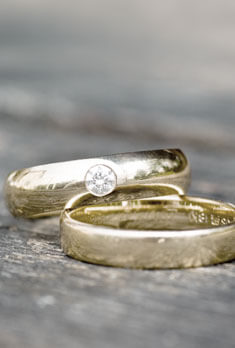The collapse of the Roman Empire in the 5th century A.D. marked the beginning of the “Dark Ages.” During this period, Western Europe plunged into utter darkness by invading hordes of Visigoths, Huns, and Vandals. The absence of a Holy Roman Emperor caused an upsurge in warfare until the Christian Church emerged as the formidable force in Europe.
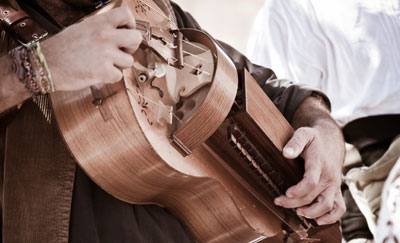
A revival in cultural awakening did not occur until the emergence of the Renaissance period.
In fact, it defined music, art, and literature. Pope Gregory I created the Gregorian Chant, the first approved music of the Church. The University of Notre Dame created a new kind of music called organum. The troubadours and trouvères of France dominated the secular music during the Middle Ages, a period that saw the first appearance of Guillaume de Machaut, arguably one of the first great names in music.
A Cultural Awakening
A revival in cultural awakening did not occur until the emergence of the Renaissance period, a defined time period that lasted between 1420 and 1600 A.D. It marked the rise of humanism and music that started to break away from the confines of the Church. In addition, a school of composers from the Netherlands started their training in polyphonic mastery.
Some of the renowned composers of the Renaissance period included Josquin des Prez, Giovanni da Palestrina, John Dowland, William Byrd, and Thomas Morley. The Renaissance composers placed a heavy emphasis on vocals. They incorporated a concept known as “word painting” to create a musical representation of imaginary poetic images. In addition, Renaissance music presented a balanced expressed absent of extreme variances in tone and rhythm.
The Baroque Period.
The Baroque period trained a new school of composers that rebelled against the styles of the Renaissance. The European monarchies employed the greatest composers of their time as a means of outdoing opposing kingdoms. It was meant to boast their pride. The monarchs looked at composers as a little more than peasants, and expected music churned out to them at their beck and call.
Some of the most renowned composers of the Baroque period included Johann Sebastian Bach, Claudio Monteverdi, Antonio Vivaldi, Domenico Scarlatti, and George Frideric Handel. Scholars define Baroque music by its unity in mood, often conveyed in the continuity of rhythm and melody. In other words, if a Baroque piece paints a happy and tranquil mood at the beginning of its composition, then it will continue with that same mood until the end. Baroque composers created constancy in rhythm, melody, and dynamics within their works of art.
Renaissance Instruments
Early musicians played a variety of instruments that produced an array of harmonious sounds, such as woodwind, stringed, keyboards, and percussion instruments. Woodwind musicians played wood-based, end-blown flutes together in tandem during the Renaissance period. Popular woodwind instruments included the piccolino, soprano, alto, tenor, sopranino, and bass recorders, crumhorns, cornemuse, shawms, rackets, and sackbuts.
Musicians who specialized in stringed instruments developed affinities for the lutes, harps, psaltery, Vehuela de Mano, hurdy-gurdy, rebec, vielle, and viol. Renaissance musicians also operated the portative organ; however, musicians mainly used the harpsichord as the primary keyboard from 1500 to 1775.
Early musicians played percussion instruments all throughout the Middle Ages and Renaissance period. Musicians mainly used percussion instruments in dance music. As with many early music instruments, percussionists derived their instruments from a variety of materials. Therefore, each percussion instrument was unique to its individual designer. No standardized design existed during the Middle Ages and Renaissance. Many percussion instruments included the drum, bell, ratchet, triangle, cymbals, and the tambourine.
More about Medieval and Renaissance Instruments:
- A Guide to Medieval and Renaissance Instruments
- Early Music: Medieval & Renaissance Music History
- Medieval & Renaissance Music: A Brief Survey
- Workshop: The Morris Dancing Instrument
- Early Music Ensembles
- The Renaissance Wind Band
- Musical Instruments and Ensembles
- The Rebec Project
- Medieval and Renaissance Music A Performer's Guide
- The Rauschpfeiff
- The Dulcian
- Digital Image Archive of Medieval Music
- Flute Finger Hole Locations
- The Metropolitan Museum of Art
Did You Know?
The first English reference to the word recorder meaning a musical instrument appeared in 1388, when it was spelled ‘Recourdour’.
The Italian word for the recorder is ‘flauto dolce' which translates as ‘soft, sweet flute’.

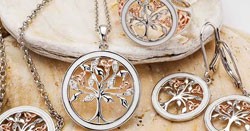
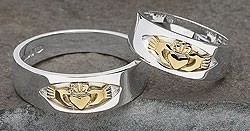
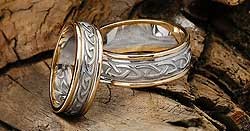
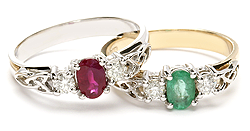
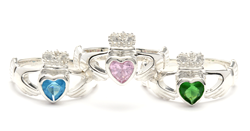
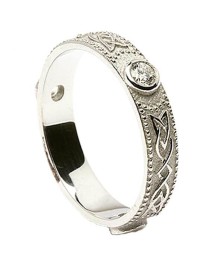 Celtic Diamond Wedding Ring
Celtic Diamond Wedding Ring 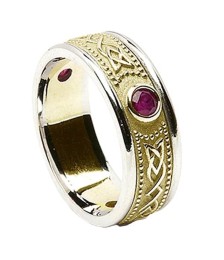 Celtic Diamond Ring with Trim
Celtic Diamond Ring with Trim  Celtic Diamond Ring with Trim
Celtic Diamond Ring with Trim 